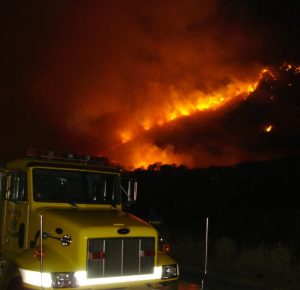 In what has already become one of the most catastrophic events in recent history, the fires ravaging Australia have become responsible for losses in many areas. Every year, the threat and arrival of bushfires create havoc within the country. With elevated risks occurring largely due to several contributing factors (extended drought, record heatwave), the bushfires of 2019-2020 have been particularly brutal in their devastating wakes. Thus far, the losses extend to human lives, structures and homes, and a questioned figure of approximately one billion animals of all kinds. More than an accumulated 46,000,000 acres of land has been destroyed in this historic collection of blazes. Most of the damages have occurred in the New South Wales areas.
In what has already become one of the most catastrophic events in recent history, the fires ravaging Australia have become responsible for losses in many areas. Every year, the threat and arrival of bushfires create havoc within the country. With elevated risks occurring largely due to several contributing factors (extended drought, record heatwave), the bushfires of 2019-2020 have been particularly brutal in their devastating wakes. Thus far, the losses extend to human lives, structures and homes, and a questioned figure of approximately one billion animals of all kinds. More than an accumulated 46,000,000 acres of land has been destroyed in this historic collection of blazes. Most of the damages have occurred in the New South Wales areas.
Of the animals, the deaths have impacted fish, reptiles, kangaroos, koalas, birds, and other lifeforms that existed within the regions affected by the fires. The impact has become so terrible it is surmised that some creatures are likely to become extinct from the wildfires. Not only animals and human lives have been impacted, but also the lives of several hundred plant species, many of which now face extinction.
An estimated 70 species of birds have been affected. These include the red-lored whistler, the red-tailed black cockatoo, the lyrebird (who interestingly have begun to mimic the sounds of sirens), the glossy black cockatoo (which have lost more than half of their habitat), and the Southern emu wren. Early assessment studies have discovered that 19 bird species have lost more than 50% of their respective essential habitats. An additional 57 bird species have lost around one-third of their habitat. Birds impacted might even become considered Critically Endangered and added to an already disturbing and growing list.
While the large scale deaths of creatures within the ranges affected is catastrophic, the decimation of the habitats they lived in will affect many in their abilities to recreate and repopulate their species. With millions of acres destroyed, there will be no trees and grasses to protect them from other threats and to provide a hospitable place to exist. It will be a long time for the lands to heal and the ecological habitats to be restored for proper sustainment of life.
The full scope of the devastation is not yet completely known. Eventually, after the current blazes have been extinguished and the fire season has ended, a complete and sobering evaluation will emerge with terrible facts. Those facts may be too harsh to take in but will definitely become a clarion call for a strong effort to help avoid future fiery catastrophes that result in the potential reduction or obliteration of species.
More needed than ever before are the donations of many to help restore the damage that this season’s bushfires have wreaked. If you’re interested in helping, please give this link a start. But there are many that you could research and donate to as you feel you should.
Volumes of records and pages will be produced for the destruction of species from the 2019-2020 bushfires. Their words and heart-breaking photographs will hearken as a warning to the uncontained destruction of areas due to long droughts and more frequent heatwaves.
Let us hope for the best humanity has to offer in the protection, conservation, and restoration of our precious resources and the life within our world.
